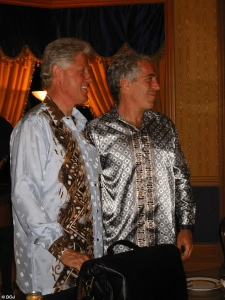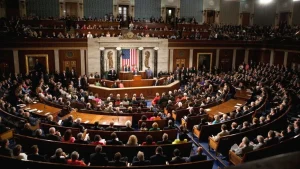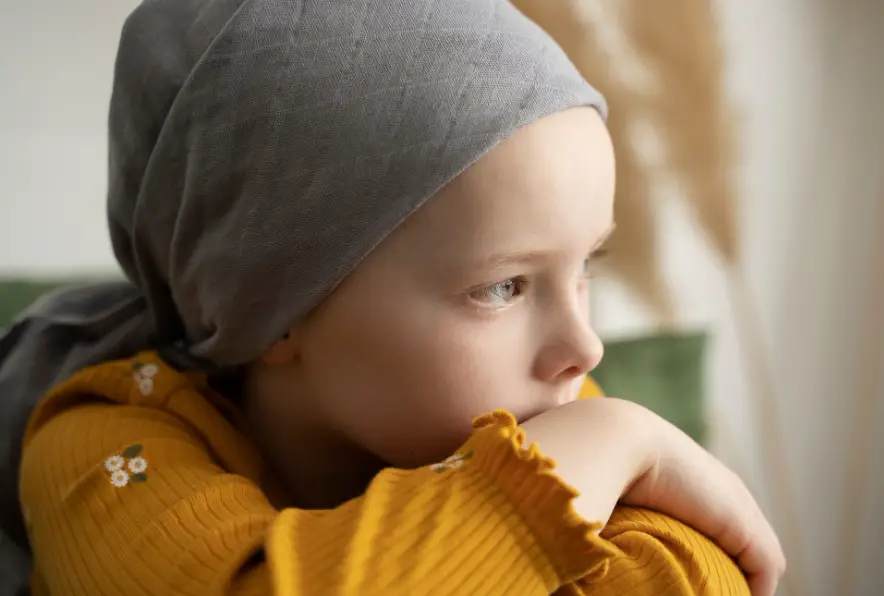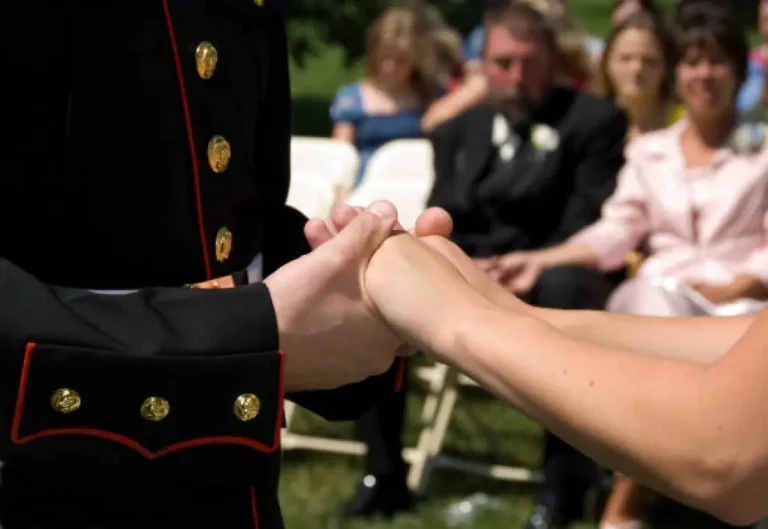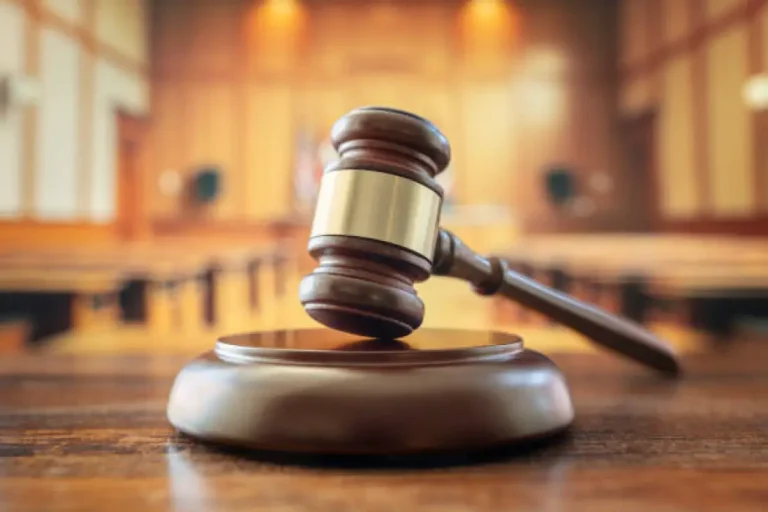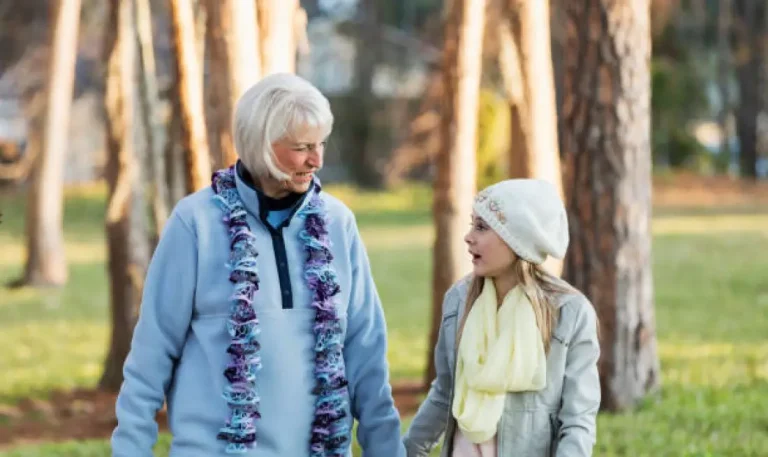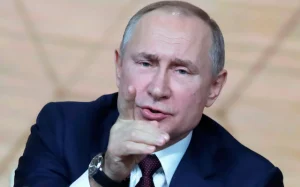Healing Hearts and Thunder: When Compassion Conquers Fear
Every Thursday at precisely 3:00 PM, a familiar rumble would echo through the parking lot of Children’s Memorial Hospital, and five-year-old Tommy’s face would light up with the kind of pure joy that had become increasingly rare during his fourteen-month battle with brain cancer. From his hospital room window, he would watch eagerly as a weathered Harley-Davidson pulled into view, ridden by a man whose appearance—leather vest, gray beard, and worn boots—might have intimidated other children but filled Tommy with anticipation.
“Mr. Bear is here!” Tommy would announce to anyone within earshot, pressing his small face against the window as Gary “Bear” Thompson dismounted his motorcycle with practiced ease. For eight months, this ritual had provided the brightest moments in Tommy’s increasingly difficult journey with an aggressive brain tumor that had proven resistant to conventional treatment.
What neither the medical staff nor Tommy’s family initially understood was the profound personal sacrifice behind these weekly visits. Gary was driving four hours each way, every single Thursday, to spend one hour with a child he had met entirely by chance. The story of why he chose to make this commitment would reveal depths of human compassion that challenged every stereotype about motorcycle riders and demonstrated the healing power of authentic connection.
The Beginning of an Extraordinary Friendship
As Tommy’s primary care nurse for the past fourteen months, I had witnessed the devastating progression of pediatric brain cancer and its impact on both patients and families. Tommy’s parents, Lisa and Michael, were remarkable people who had reorganized their entire lives around their son’s treatment schedule, but the emotional toll was becoming increasingly visible. Michael had begun working double shifts, ostensibly to manage mounting medical expenses, though it was clear he was also struggling to cope with watching his son suffer. Lisa maintained a constant vigil at Tommy’s bedside, but her vibrant personality had gradually faded into a quiet resignation that concerned the entire medical team.
The transformation began on an ordinary Thursday afternoon when Gary Thompson happened to park his motorcycle directly outside Tommy’s window. At that time, Tommy had been experiencing a particularly difficult period—his latest round of chemotherapy had left him weak and disinterested in activities that previously brought him joy. Then he spotted the Harley-Davidson in the parking lot below.
“Motorcycle! Mama, look! Big motorcycle!” Tommy had shouted with an enthusiasm we hadn’t seen in weeks, pressing himself against the window and waving frantically at the rider below.
Gary must have heard the commotion through the glass because he looked up, saw this tiny bald child gesturing excitedly, and responded with a wave and smile that seemed to energize Tommy more than any medical intervention we had attempted recently.
Twenty minutes later, Gary appeared at our nurses’ station, his intimidating exterior softened by genuine concern. “I’d like to visit the little guy who likes motorcycles,” he said simply. “If that’s allowed.”
Understanding the Therapeutic Value of Connection
What followed was the beginning of a weekly tradition that would demonstrate the profound impact of consistent, caring relationships on pediatric patients facing life-threatening illnesses. Research in pediatric oncology has consistently shown that emotional support and meaningful connections can significantly improve quality of life for young patients, even when medical prognosis remains challenging.
Gary brought more than just toys and conversation to these visits—he brought respect, treating Tommy not as a pitiable sick child but as a fellow enthusiast worthy of serious discussion about motorcycle specifications, road trip possibilities, and the freedom that comes with riding. Their conversations would range from debates about Harley-Davidson versus Indian motorcycles to elaborate planning sessions for imaginary cross-country adventures.
“When you get better,” Gary would say with unwavering conviction, “I’ll teach you to ride. We’ll start with a dirt bike and work our way up to the big bikes.”
While medical professionals maintained realistic expectations about Tommy’s prognosis, Gary’s approach provided something equally valuable—hope, dignity, and the experience of being treated as a complete person rather than defined solely by his illness.
The psychological benefits were immediately apparent. Tommy began eating more regularly on Wednesdays and Thursdays, explaining that he needed to “stay strong for Mr. Bear.” He would refuse pain medication before Gary’s visits, preferring to be fully alert for their time together. His sleep improved, and his engagement with other aspects of treatment increased measurably.
The Modern Approach to Pediatric Cancer Care
Children’s Memorial Hospital represents the forefront of pediatric oncology treatment, employing multidisciplinary teams that address not only the medical aspects of cancer but also the psychological, social, and emotional needs of young patients and their families. Our approach integrates advanced medical therapies with comprehensive support services designed to maintain quality of life throughout treatment.
Contemporary pediatric cancer treatment has evolved significantly over the past decade, with survival rates improving dramatically for many types of childhood cancers. Treatment protocols now emphasize individualized care plans that consider each patient’s specific tumor characteristics, genetic factors, and overall health status. For brain tumors like Tommy’s, treatment typically involves a combination of surgical intervention when possible, targeted radiation therapy, and carefully selected chemotherapy regimens designed to minimize long-term developmental impacts.
The hospital’s child life specialists work closely with medical teams to ensure that young patients continue experiencing age-appropriate activities and emotional development even during intensive treatment periods. Research has demonstrated that maintaining connections to normal childhood experiences—play, friendship, learning, and joy—contributes significantly to both psychological resilience and physical recovery.
Innovative therapeutic approaches continue expanding treatment options for pediatric brain tumors. Immunotherapy protocols are showing promising results by helping patients’ immune systems recognize and attack cancer cells more effectively. Precision medicine approaches use genetic analysis of tumor samples to identify specific targeted therapies that may be more effective than traditional chemotherapy. Clinical trials are constantly evaluating new treatment combinations that might improve outcomes while reducing side effects.
For families facing pediatric cancer diagnoses, comprehensive support services have become integral to treatment programs. Social workers help navigate insurance complexities and connect families with financial assistance programs. Nutritionists ensure that young patients maintain proper nutrition during treatment when appetite and eating may be challenging. Mental health professionals provide counseling services for both patients and family members dealing with the emotional trauma of serious illness.
The importance of maintaining hope while remaining realistic about medical challenges requires delicate balance from healthcare providers. Families need accurate information about prognosis and treatment options, but they also need support for emotional resilience and quality of life during whatever time they have together.
The Hidden Story Behind the Visits
Six months into Gary’s weekly visits, I finally gathered the courage to ask him directly about his motivation for making such an extraordinary commitment. Tommy was napping after their latest session, exhausted but content after an afternoon spent examining Gary’s motorcycle helmet and discussing the aerodynamics of different bike designs.
Gary was quiet for several minutes, his weathered hands folded in his lap as he watched Tommy sleep peacefully. Finally, he reached for his wallet and withdrew a faded photograph that he handled with obvious reverence.
The image showed a little boy, perhaps six years old, sitting proudly on a small motorcycle with a beaming smile that immediately reminded me of Tommy’s expression during Gary’s visits.
“My son Danny,” Gary said quietly, his voice carrying decades of carefully controlled grief. “Lost him to the same disease thirty-two years ago. He was seven when the brain cancer finally took him.”
The revelation hit me like a physical blow, suddenly illuminating the profound courage required for Gary to walk into our pediatric oncology unit every week and voluntarily relive the most traumatic experience of his life.
“Danny loved motorcycles even more than Tommy does,” Gary continued, carefully returning the photograph to his wallet. “Even when the treatment left him too weak to walk, he’d make me carry him out to the garage so he could sit on my bike. Made me promise that when he got to heaven, God would have a motorcycle waiting for him.”
The conversation that followed revealed the full scope of Gary’s journey through grief and healing. After Danny’s death, Gary had stopped riding entirely for twenty years, unable to bear the memories associated with motorcycles. Gradually, he came to understand that avoiding something they had both loved was dishonoring Danny’s memory rather than preserving it.
“I started riding again about twelve years ago,” Gary explained. “But it was never the same. Every ride felt hollow, like I was going through the motions without real purpose. Until I saw Tommy at that window.”
The Brotherhood of Support
Gary’s individual commitment to Tommy represented just one example of the broader community support that often emerges around families facing pediatric cancer. The Iron Hearts Motorcycle Club, of which Gary was a founding member, had a long history of charitable activities supporting children’s causes, veterans’ organizations, and community service projects.
Despite media stereotypes about motorcycle clubs, organizations like the Iron Hearts typically consist of working professionals, military veterans, and community members who share a passion for riding and a commitment to helping others. Their charitable activities range from organizing toy drives for hospitalized children to providing financial assistance for families dealing with medical crises.
The club’s members came from diverse professional backgrounds—teachers, mechanics, business owners, healthcare workers, and retired military personnel—united by their love of motorcycles and their dedication to making positive differences in their communities. Gary himself was a retired machinist who had spent forty years in manufacturing before discovering that his true calling involved helping others navigate difficult circumstances.
When word spread through the Iron Hearts about Tommy’s situation, other members began contributing to the weekly visits in their own ways. Some provided the toy motorcycles that Gary brought each week. Others sent get-well cards featuring motorcycle photography. The club’s treasurer quietly established a fund to help cover Tommy’s family’s travel and lodging expenses during their frequent hospital stays.
The Vest That Changed Everything
On Tommy’s sixth week of visits, Gary arrived with something special—a miniature leather vest, carefully crafted to child proportions and featuring a single patch: “Honorary Iron Heart.” The vest represented more than just a gift; it was a formal recognition of Tommy’s membership in a community that valued courage, loyalty, and determination.
Tommy’s reaction to receiving the vest was one of the most powerful moments I witnessed during my years in pediatric nursing. He cried—not from pain or sadness, but from pure joy at being recognized as belonging somewhere, of being valued for who he was rather than pitied for what he was enduring.
“Now you’re one of us,” Gary said with the solemnity of an official ceremony. “A real rider.”
From that point forward, Tommy wore his vest during every Thursday visit and insisted it hang prominently on his IV pole during the rest of the week where he could see it constantly. The vest became a source of strength during difficult medical procedures, with Tommy explaining to doctors and nurses that he needed to be brave because he was “a real rider now.”
The psychological impact was remarkable. Tommy’s sense of identity expanded beyond being “the sick kid” to include being “an honorary biker,” someone with a place in a community that valued toughness, independence, and mutual support. This shift in self-perception contributed to improved cooperation with medical treatments and better overall emotional resilience.
The Final Weeks
As Tommy’s condition deteriorated during his final months, the Thursday visits became even more precious to everyone involved. Medical scans revealed that the tumor was continuing to grow despite aggressive treatment, and the oncology team had begun focusing primarily on comfort care and quality of life rather than curative interventions.
Gary’s commitment never wavered, even as the visits became increasingly difficult to witness. Tommy’s energy levels fluctuated dramatically, and there were weeks when he could barely stay awake for their entire hour together. Yet Gary continued making the eight-hour round trip, understanding that consistency and reliability were among the greatest gifts he could offer.
During what would prove to be Tommy’s final Thursday visit, Gary brought a special surprise—he had received permission to wheel Tommy’s bed near the window so they could watch together as other Iron Hearts members performed a brief motorcycle demonstration in the parking lot below. Despite his weakened condition, Tommy managed to smile and wave at the riders who had come specifically to honor their youngest member.
The conversation during that last visit focused on the adventures Tommy and Gary would share “someday,” with Gary describing mountain roads, desert highways, and coastal routes where the sound of motorcycle engines harmonized with ocean waves. Tommy listened with rapt attention, occasionally asking questions about specific destinations or motorcycle capabilities.
Then, in a moment of clarity that sometimes occurs near the end of life, Tommy asked a question that stopped everyone in the room: “Will Danny be there when I get my motorcycle?”
Gary had never mentioned Danny’s name during any of their visits, yet somehow Tommy had intuited the connection between them—perhaps sensing the depth of understanding that only comes from shared experience with profound loss.
“Yes, buddy,” Gary managed to say through tears that had been building for months. “Danny will be there. He’s been waiting to meet you, and he’s got your motorcycle all ready.”
Tommy smiled with the peaceful expression of someone who finally understood his place in a larger story. “Red with flames?” he asked, referring to the dream motorcycle they had designed together during previous visits.
“Red with flames,” Gary confirmed, his voice breaking with emotion.
The Celebration of a Life
Tommy passed away quietly two days later, wearing his leather vest and holding one of the toy motorcycles Gary had given him during their first meeting. His parents were with him, along with several members of the medical staff who had grown to love this brave little boy over the course of his treatment.
The funeral service was planned as a small, private gathering for family and close friends. However, when the procession arrived at the cemetery, they discovered something extraordinary: hundreds of motorcycles lined the roads leading to the burial site, their riders standing in respectful silence as the small casket was carried past.
Word of Tommy’s death had spread throughout the motorcycle community, not just locally but across state lines. Riders from dozens of different clubs had come to pay their respects to the youngest member of their brotherhood, creating an overwhelming display of solidarity and support for his grieving family.
The most emotionally powerful moment occurred after the formal service concluded. Gary stepped forward and started his Harley-Davidson, the distinctive rumble echoing across the cemetery grounds. One by one, every other motorcycle present joined in, creating a thunderous tribute that seemed to shake the very earth.
They revved their engines in unison three times—a traditional salute reserved for fallen brothers—before cutting their engines simultaneously, leaving only silence and the sound of hundreds of people crying for a little boy who had taught them about courage, hope, and the power of genuine friendship.
The Continuing Legacy
Gary’s Thursday ritual continues to this day, though it has evolved to honor Tommy’s memory while helping other children facing similar battles. Each week, he first stops at Tommy’s grave, where a special display case now houses dozens of toy motorcycles left by visitors from across the country who have heard their story.
The Iron Hearts Motorcycle Club established a new tradition following Tommy’s death: every Thursday at 3:00 PM, regardless of location, members pause whatever they’re doing and rev their engines once in honor of Tommy, Danny, and all the “little riders” who inspire them to be better people.
Gary continues visiting the children’s cancer ward, though now he focuses his attention on different young patients who share Tommy’s enthusiasm for motorcycles. He carries with him a collection of child-sized leather vests, each one bearing the “Honorary Iron Heart” patch that signifies membership in a community dedicated to courage, loyalty, and mutual support.
The hospital’s child life department has embraced Gary’s therapeutic approach, formally recognizing the value of connecting young patients with caring adults who share their interests and can provide consistent emotional support throughout treatment. Research studies are documenting the positive impacts of such relationships on patient outcomes, psychological resilience, and family coping strategies.
Dr. Sarah Martinez, the hospital’s chief of pediatric oncology, has observed the transformative power of connections like the one between Gary and Tommy. “Medical treatment addresses the disease,” she explains, “but healing requires attention to the whole person—their hopes, dreams, relationships, and sense of purpose. What Gary provided was irreplaceable.”
The Broader Impact
The story of Gary and Tommy has resonated far beyond their local community, inspiring similar volunteer programs at children’s hospitals across the country. Motorcycle clubs, car enthusiasts, and other hobby groups have developed structured programs for visiting pediatric patients who share their interests, providing consistent emotional support and mentorship during difficult treatment periods.
Tommy’s mother, Lisa, has become an advocate for comprehensive pediatric cancer support services, speaking at medical conferences about the importance of addressing patients’ emotional and social needs alongside their medical treatment. She frequently shares the photograph from Tommy’s final Thursday visit—both he and Gary smiling at the camera, Tommy practically drowning in his tiny leather vest—as evidence of what’s possible when communities rally around their most vulnerable members.
“Gary showed my son that strength comes in many forms,” Lisa often tells audiences. “He proved that tough men can have the gentlest hearts, and that sometimes the most powerful medicine is simply showing up, week after week, with genuine love and respect.”
The Iron Hearts Motorcycle Club has established the Tommy and Danny Memorial Fund, which provides financial assistance to families dealing with pediatric cancer while supporting research into improved treatment options. The fund has helped dozens of families manage the logistical and financial challenges of extended medical treatment while contributing to advancing scientific understanding of childhood brain tumors.
Understanding the Therapeutic Relationship
The bond between Gary and Tommy illustrates important principles about therapeutic relationships in pediatric healthcare settings. Research in child psychology demonstrates that consistent, caring relationships with non-family adults can provide crucial emotional support for children facing medical challenges, offering different perspectives and coping strategies than those available within family systems.
Gary’s approach worked because he respected Tommy as a complete person with interests, opinions, and dreams that extended beyond his medical condition. Rather than focusing on limitations imposed by illness, their relationship celebrated possibilities and maintained connection to normal childhood enthusiasms. This approach helped Tommy maintain his sense of identity and personal agency during a period when medical procedures and physical limitations might have made him feel powerless.
The weekly visits provided structure and anticipation that enhanced Tommy’s overall quality of life. Having something to look forward to each week gave him motivation to cooperate with medical treatments and maintain emotional resilience during difficult periods. The consistency of Gary’s presence demonstrated reliability and commitment that helped build trust and security.
For families dealing with pediatric cancer, relationships like the one between Gary and Tommy offer several important benefits. They expand the child’s support network beyond immediate family members, who may be dealing with their own emotional challenges. They provide opportunities for children to discuss their experiences with someone who brings a different perspective to their situation. They demonstrate that the broader community cares about their wellbeing and values them as individuals.
The Science of Compassion
Medical research has increasingly recognized the physiological impacts of positive emotional experiences on healing processes. Studies show that laughter, joy, and meaningful social connections can boost immune system function, reduce stress hormones, and improve overall treatment outcomes for patients facing serious illnesses.
The consistency of Gary’s visits provided what psychologists call “secure attachment” outside the family system—a reliable, caring relationship that helped Tommy feel valued and supported even when medical treatments were challenging or unsuccessful. This type of emotional security contributes to resilience and helps children maintain hope even in difficult circumstances.
Neuroscience research demonstrates that positive social interactions trigger the release of hormones like oxytocin and endorphins, which have natural pain-relieving and mood-enhancing effects. For pediatric patients dealing with chronic pain and emotional distress, these naturally occurring biochemical changes can provide meaningful relief that complements medical interventions.
The anticipation Tommy felt each week while waiting for Gary’s visits also contributed to his overall wellbeing. Research shows that having something positive to look forward to activates reward pathways in the brain, improving mood and motivation while providing temporary relief from focusing on immediate discomforts or fears.
Lessons for Healthcare Providers
The relationship between Gary and Tommy offers important insights for healthcare professionals working with pediatric patients and their families. It demonstrates the value of treating young patients as complete individuals with interests, preferences, and social needs that extend beyond their medical conditions.
Healthcare providers can learn from Gary’s approach of focusing on possibilities rather than limitations, maintaining hope while being realistic about challenges, and respecting children’s autonomy and decision-making capabilities even in medical settings. These principles can be incorporated into daily interactions with patients, family conferences, and treatment planning discussions.
The story also highlights the importance of supporting and facilitating meaningful relationships between patients and community members who can provide unique forms of emotional support. Healthcare institutions can develop programs that connect patients with volunteers who share their interests and can provide consistent, long-term relationships throughout treatment periods.
For families, Gary’s example demonstrates that healing involves more than medical interventions—it requires attention to emotional, social, and spiritual needs that help maintain quality of life and personal dignity regardless of medical prognosis. Understanding this broader definition of healing can help families make more informed decisions about treatment goals and priorities.
The Enduring Message
The story of Gary “Bear” Thompson and Tommy illustrates profound truths about human compassion, the healing power of authentic relationships, and the courage required to love someone when loss seems inevitable. It challenges stereotypes about motorcycle riders while demonstrating that strength and gentleness often coexist in remarkable ways.
Their relationship proves that healing takes many forms—not all of them medical, not all of them resulting in cure, but all of them meaningful in their contribution to quality of life and human dignity. Sometimes the most powerful medicine is simply showing up, week after week, with genuine care and respect for another person’s journey.
For Gary, those Thursday visits provided a way to honor Danny’s memory while helping another child experience the joy and community that motorcycles had brought to his own son’s short life. For Tommy, they represented adventure, belonging, and proof that he was valued for who he was rather than pitied for what he was enduring.
Their story continues to inspire healthcare providers, families, and community members to look beyond surface appearances and recognize opportunities to make meaningful differences in other people’s lives. It reminds us that sometimes the most profound acts of service require nothing more than consistent presence, genuine interest, and the willingness to share someone else’s journey with grace and compassion.
In pediatric healthcare settings across the country, the echo of Thursday afternoon motorcycle engines serves as a reminder that healing happens in many ways, and that sometimes the most important medicine comes not from a pharmacy but from the inexhaustible capacity of the human heart to care for others, especially the smallest and most vulnerable among us.

Emily Johnson is a critically acclaimed essayist and novelist known for her thought-provoking works centered on feminism, women’s rights, and modern relationships. Born and raised in Portland, Oregon, Emily grew up with a deep love of books, often spending her afternoons at her local library. She went on to study literature and gender studies at UCLA, where she became deeply involved in activism and began publishing essays in campus journals. Her debut essay collection, Voices Unbound, struck a chord with readers nationwide for its fearless exploration of gender dynamics, identity, and the challenges faced by women in contemporary society. Emily later transitioned into fiction, writing novels that balance compelling storytelling with social commentary. Her protagonists are often strong, multidimensional women navigating love, ambition, and the struggles of everyday life, making her a favorite among readers who crave authentic, relatable narratives. Critics praise her ability to merge personal intimacy with universal themes. Off the page, Emily is an advocate for women in publishing, leading workshops that encourage young female writers to embrace their voices. She lives in Seattle with her partner and two rescue cats, where she continues to write, teach, and inspire a new generation of storytellers.
